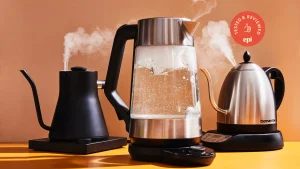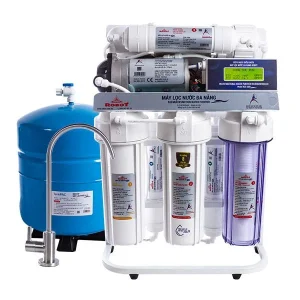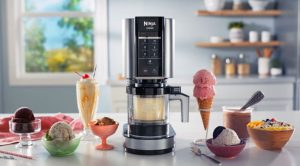Juicer: What Is It? How It Works, Applications, and Safe Usage Tips

A juicer is a kitchen appliance designed to extract juice from fruits, vegetables, and other foods. This convenient tool has become a popular addition to modern kitchens for making fresh and nutritious beverages. In this article, we will explore what a juicer is, how it works, its various applications, and provide essential safety tips to use it effectively.
1. What Is a Juicer?
A juicer is an electrical appliance that helps you extract juice from fruits and vegetables by crushing or grinding them. It is used to separate the juice from the pulp, providing a fresh and healthy drink. Juicers come in various types, each offering different methods of extraction, and they vary in size, design, and functionality.
Common Types of Juicers:
- Centrifugal Juicer: This is the most common type, using high-speed spinning to extract juice from fruits and vegetables. It works by rapidly slicing and grinding produce, and then using centrifugal force to separate the juice from the pulp.
- Masticating Juicer (Cold Press Juicer): This type of juicer works by slowly chewing and grinding produce. The juice is then extracted through a cold-pressing process. This method helps preserve more nutrients and enzymes, making it ideal for leafy greens and wheatgrass.
- Citrus Juicer: Specifically designed for juicing citrus fruits like oranges, lemons, and grapefruits, citrus juicers typically use a reamer to extract the juice.
- Triturating Juicer (Twin Gear Juicer): This high-end juicer uses two interlocking gears to crush and grind the produce, resulting in high-quality juice with minimal oxidation. It is great for extracting juice from a wide range of ingredients, including hard fruits and vegetables.
Benefits of Using a Juicer:
- Fresh Juice: Juicers allow you to make fresh, nutrient-packed juice at home, which is free from preservatives and additives commonly found in store-bought juices.
- Health Benefits: Drinking fresh juice provides essential vitamins, minerals, and antioxidants, helping improve overall health.
- Versatility: Juicers can handle a wide variety of produce, from fruits to leafy greens and even nuts, providing diverse options for juice-based drinks.
2. How Does a Juicer Work?
The working principle of a juicer depends on its type. However, most juicers follow a basic process of extracting juice through either grinding, pressing, or centrifugal force. Let’s break down the basic components and operation:
Key Components of a Juicer:
- Motor: The motor is the power source for most juicers. It drives the mechanism that either spins, grinds, or presses the ingredients.
- Feed Chute: The feed chute is where you place the fruits or vegetables. In some juicers, the chute is wide enough to accommodate whole fruits, while others require pre-cut pieces.
- Juicing Mechanism:
- For centrifugal juicers, the mechanism includes spinning blades that chop and slice produce, followed by a mesh filter to separate the juice from the pulp.
- For masticating juicers, a slow-turning auger grinds and crushes the produce to extract juice.
- Juice and Pulp Containers: The juice flows into a container, while the pulp is separated and collected in a separate bin or container.
How the Juicing Process Works:
- Feeding the Produce: Place the fruits, vegetables, or citrus fruits into the feed chute. Some juicers may require you to cut large items into smaller pieces before feeding them into the machine.
- Juicing: Depending on the juicer type, the produce is either spun, pressed, or ground to extract the juice. This process also separates the juice from the pulp.
- Collecting the Juice: The extracted juice is directed into a container, ready to be enjoyed.
- Pulp Separation: The leftover pulp is deposited in a separate bin, which can be discarded or used in other recipes, such as smoothies or baking.
3. Where Is a Juicer Used?
Juicers are versatile kitchen appliances and can be used in various settings for different purposes. Some of the common applications include:
Home Use:
- Healthy Beverage Preparation: Juicers are commonly used in homes to create fresh fruit and vegetable juices, offering a healthy alternative to sugary sodas and store-bought juices.
- Smoothie Additions: Many people use juicers to prepare ingredients for smoothies, providing nutrient-dense drinks to complement meals.
- Detox and Cleansing: Some people use juicers as part of a detox plan, consuming fresh vegetable and fruit juices to cleanse their bodies.
Commercial Use:
- Cafes and Restaurants: Many cafes and restaurants use juicers to serve freshly squeezed juices as part of their menu. Cold-pressed juices, in particular, are a popular choice for health-conscious customers.
- Juice Bars: Dedicated juice bars use industrial juicers to produce large quantities of juice quickly and efficiently, serving a variety of flavors and combinations.
- Health and Wellness Centers: Juicers are commonly found in health spas, gyms, and wellness centers where fresh juice is part of a balanced lifestyle.
Special Occasions and Events:
- Parties and Gatherings: Juicers are popular at events where fresh beverages, such as freshly squeezed citrus juice or fruit blends, are served to guests.
- Meal Prep: Juicers can be used to prepare large quantities of juice ahead of time for busy days, providing a quick and healthy option.
4. How to Use a Juicer Safely
While juicers are easy to use, following proper safety guidelines will ensure safe and effective operation. Here are some important safety tips to keep in mind:
Before Using the Juicer:
- Read the Manual: Always read the user manual that comes with your juicer to understand its components, settings, and proper usage.
- Check the Power Cord: Ensure that the power cord is not damaged and that the appliance is plugged into a properly grounded outlet.
- Use on a Flat, Stable Surface: Place the juicer on a flat, stable surface to prevent it from tipping over during use.
During Juicing:
- Use the Pusher Tool: Most juicers come with a pusher tool to safely guide produce into the feed chute. Never use your hands to push ingredients into the chute while the machine is operating.
- Avoid Overloading the Juicer: Do not overload the juicer with too many fruits or vegetables at once. This can lead to jams or damage to the motor.
- Turn Off When Not in Use: Always turn off the juicer when you’re not actively using it, especially when adding ingredients or cleaning it.
After Juicing:
- Allow Cooling Before Cleaning: Once juicing is complete, allow the machine to cool before cleaning it to prevent burns or damage.
- Clean Thoroughly: Clean all parts of the juicer, especially the blade and filter, after each use to prevent clogging and bacteria buildup. Some juicers are dishwasher safe, but always check the manufacturer’s recommendations.
- Unplug When Not in Use: Always unplug the juicer when it’s not in use to avoid accidental activation.
Conclusion
A juicer is a valuable appliance for anyone looking to enjoy fresh, nutritious juices at home or in commercial settings. With the ability to extract juice from various fruits and vegetables, juicers help you maintain a healthy diet and enjoy a variety of drinks. By understanding how it works, using it safely, and exploring its many applications, you can make the most out of this versatile kitchen tool. Whether for a healthy breakfast or a refreshing snack, a juicer brings convenience and nutrition to your daily routine.







